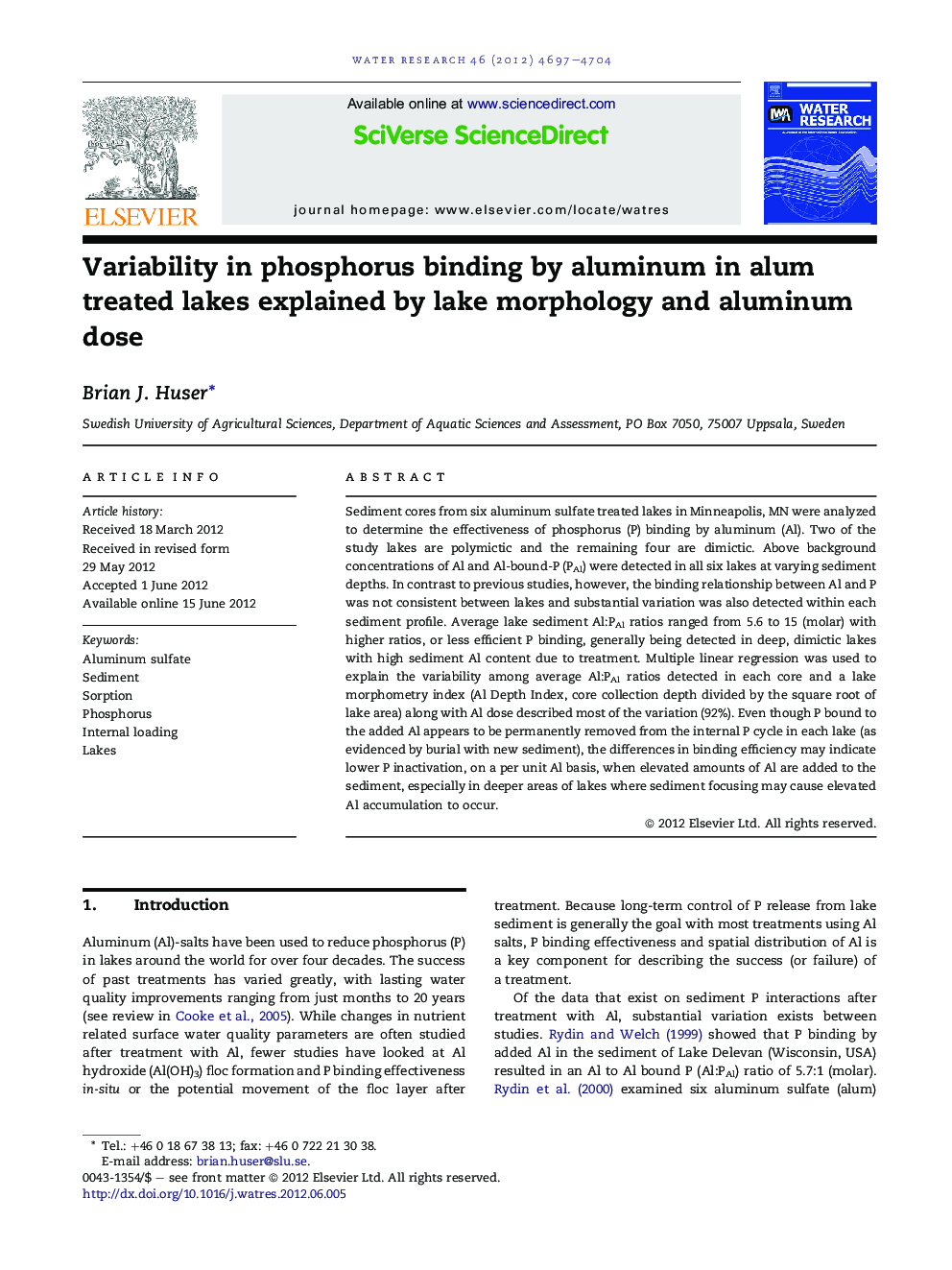| Article ID | Journal | Published Year | Pages | File Type |
|---|---|---|---|---|
| 4482989 | Water Research | 2012 | 8 Pages |
Sediment cores from six aluminum sulfate treated lakes in Minneapolis, MN were analyzed to determine the effectiveness of phosphorus (P) binding by aluminum (Al). Two of the study lakes are polymictic and the remaining four are dimictic. Above background concentrations of Al and Al-bound-P (PAl) were detected in all six lakes at varying sediment depths. In contrast to previous studies, however, the binding relationship between Al and P was not consistent between lakes and substantial variation was also detected within each sediment profile. Average lake sediment Al:PAl ratios ranged from 5.6 to 15 (molar) with higher ratios, or less efficient P binding, generally being detected in deep, dimictic lakes with high sediment Al content due to treatment. Multiple linear regression was used to explain the variability among average Al:PAl ratios detected in each core and a lake morphometry index (Al Depth Index, core collection depth divided by the square root of lake area) along with Al dose described most of the variation (92%). Even though P bound to the added Al appears to be permanently removed from the internal P cycle in each lake (as evidenced by burial with new sediment), the differences in binding efficiency may indicate lower P inactivation, on a per unit Al basis, when elevated amounts of Al are added to the sediment, especially in deeper areas of lakes where sediment focusing may cause elevated Al accumulation to occur.
Graphical abstractFigure optionsDownload full-size imageDownload high-quality image (193 K)Download as PowerPoint slideHighlights► Binding capacity of aluminum varies substantially in alum treated lake sediments. ► Aluminum dose and Al-floc translocation control sediment aluminum accumulation. ► Lake morphology and aluminum dose explain aluminum phosphorus binding variability.
